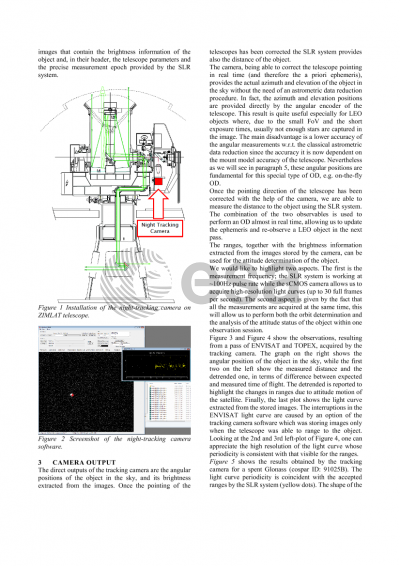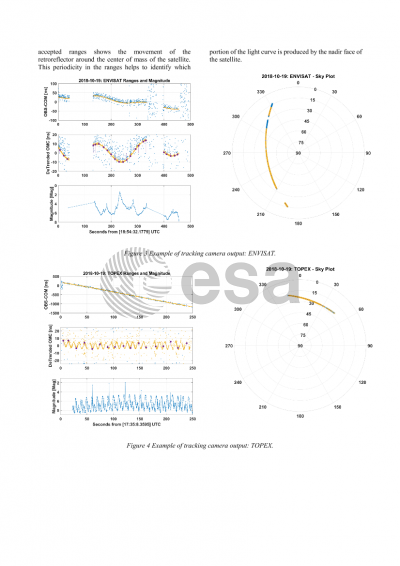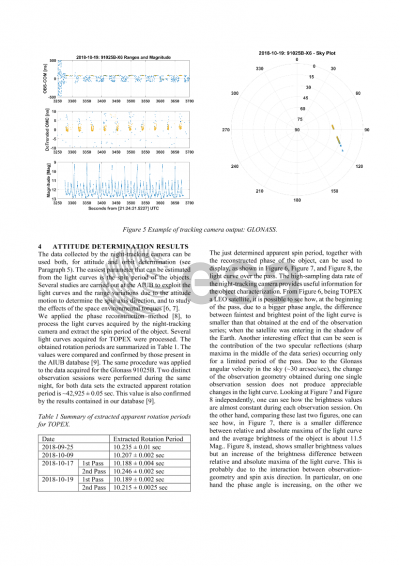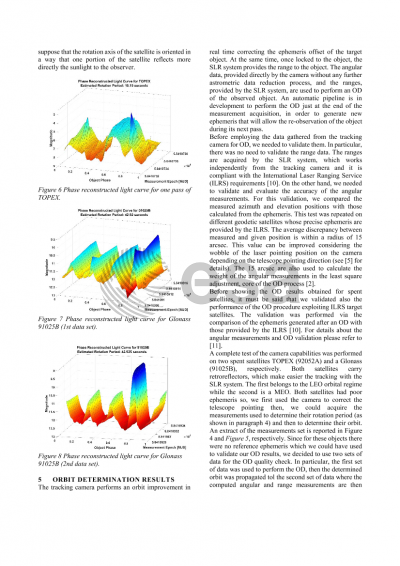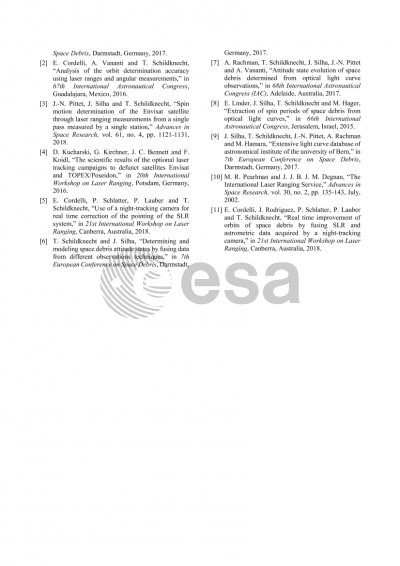Document details
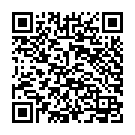
Abstract
The precise knowledge of the positions of space debris objects and in particular of defunct satellites is fundamental for satellite operations. Several studies showed that it is possible to improve the accuracy of the orbit determination results by fusing different type of observables, i.e. classical astrometric positions and range measurements. Particularly promising in the space debris field are the ranges provided by a satellite laser ranging system. The factors which limit the applicability of the SLR techniques are the altitude of the target, the accuracy of the predicted ephemeris of the target, the energy of the laser pulse, and the laser field of view.
In this paper we will show a way to overcome the mentioned challenges by using a night-tracking camera for the real time correction of the pointing of the SLR system (active tracking), and for the simultaneous acquisition of measurements used to improve the orbits and to study the attitude of the target. After presenting the basic functionalities, the performance of the night-tracking camera, and the procedure to acquire the measurements, we will also show the potential of this tool to allow improving orbits in real-time. This study will be carried out for defunct or recently decommissioned satellites. Only real angular/laser measurements provided by the sensors of the Swiss Optical Ground Station and Geodynamics Observatory Zimmerwald owned by the Astronomical Institute of the University of Bern (AIUB) are used.
Preview

